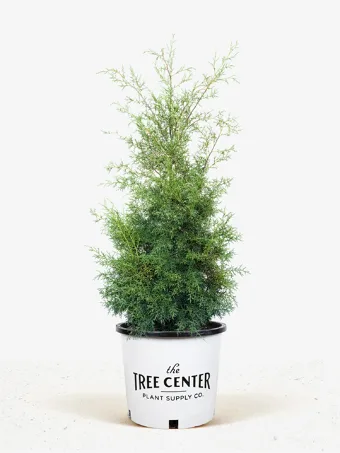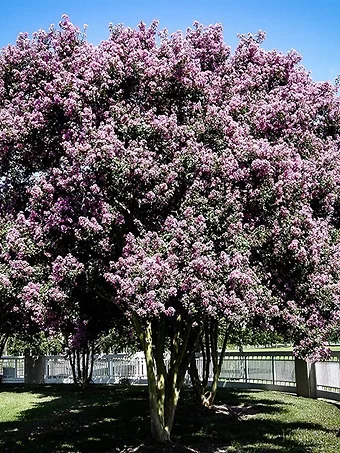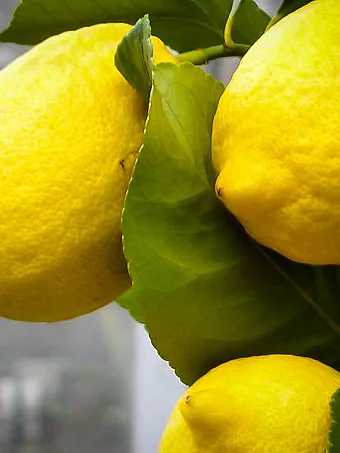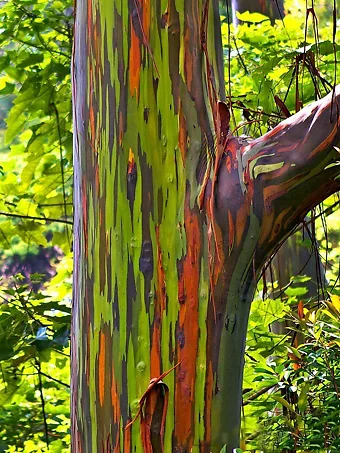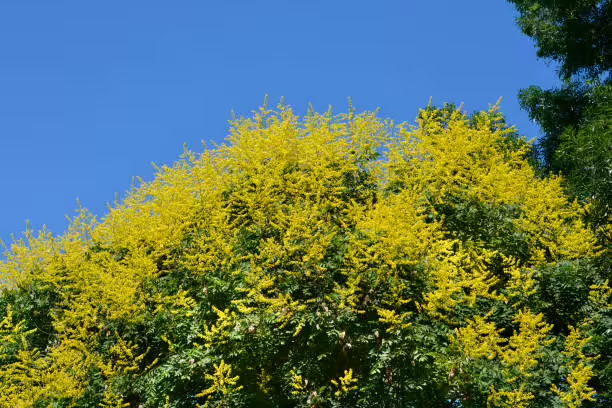
Written by s • Trees and Shrubs for Florida
Florida sits across two hardiness zones. The north, and indeed most of the state, is in gentle zone 9, where winter temperatures might reach 20 degrees, meaning 12 degrees Fahrenheit below freezing, but generally stay above that. The south is firmly placed in zone 10, where even a touch of frost is a rare event and many winters pass frost-free. Even in the north, in sheltered areas, frost is not likely to do much harm to any but the most tender plants.
While gardeners from the north may look in awe, this perpetual mild weather has its problems. Plants that need real cold to mature their buds will do poorly, never coloring in the fall and never flowering. The fall color of the north is mainly absent, although some trees will still perform well. So for someone accustomed to cooler climates, a move to Florida can mean some adjustments in the garden, and a new vocabulary of plants for successful and easy gardening pleasure.
The needs of the garden remain much the same – privacy, the permanence of evergreens, the joy of flowering trees and shrubs, year-round interest, perhaps some home-grown produce – all these requirements are universal, wherever you garden. As well, drought and pest resistance are vital for a garden that is meant to be enjoyed, not become a source of endless work. So let’s look at some trees that will thrive in warmer, humid areas. Some may also grow in cooler regions but some can only be grown in the gentle climates of the Sunshine State.
Popular Trees For Florida
Privacy and Screening Trees For Florida
For a fast-growing tree that is famous for its speed and durability under a wide range of conditions, look no further than the Arizona Cypress, commonly known as the Drought Tolerant Evergreen, and also called Blue Cypress. This handsome evergreen will grow 3 feet a year, so in just a few years you will have a beautiful screen that can be clipped into a dense hedge, or left alone – it will still be full and narrow, making a perfect dense screen over 20 feet tall, but just 8 feet or so thick. Not only is it drought-resistant, it is salt-resistant too, something that is often needed in coastal areas of Florida.
Now if you are right on the coast, in sandy soil and exposed to salt-spray, you need a screening plant to protect your garden and allow you to grow more sensitive plants behind it. Top choice has to go to the Wax Myrtle, another rapid growing evergreen with rich-green, glossy foliage and the ability to grow 5 feet a year. It will soon top out around 20 feet and slow down to a more modest growth rate to reduce maintenance needs. As an added bonus you can pick the fragrant, waxy berries that form on your trees, boil them in some water, remove the wax that will form as the water cools and make fragrant candles for the holiday season.
Flowering Trees For Florida
Now you have the boundary of your property taken care off, time to think about color. Anywhere in the south is Crape Myrtle territory and these beauties thrive in Florida as they do in any warmer state. Larger ones like the lilac Muskogee Crape Myrtle or the red Arapaho Crape Myrtle will make a great flowering screen, while the smaller Dynamite Crape Myrtle and Red Rocket Crape Myrtle make vibrant specimens. For the foreground areas of your beds, the dwarf Strawberry Dazzle Crape Myrtle or the even shorter Pokomoke Crape Myrtle are perfect choices.
Whatever Crape you choose, you can be sure of continuous flowering from early summer to late fall, with the added bonus of bright red fall color even in warm areas and attractive winter bark for their brief dormancy period. Planted in the hottest, sunniest spot in the garden, these low-maintenance plants are sure to please. If you have grown older varieties that turn dusty and powdery in summer, you can be sure that will not happen with today’s plants, which have been carefully bred to resist that unsightly powdery mildew.
For a truly striking flowering tree, choose the Summer Chocolate Silk Tree, a new and greatly improved version of the Mimosa Tree, which has unique powder-puff pink blossoms combined with ferny foliage of a dramatic deep red that takes on chocolate tones as well. Already a long-blooming small tree, the addition of colored leaves makes this tree an all-season winner.
If you have moved from northern states you may be missing the flowering cherries, but don’t worry, there is one unique flowering cherry, the Okame Cherry, that does not need the long periods of cold most of these trees require. It will quickly grow into a large shrub or small tree that each spring – even after just a brief, mild winter – will be covered in deep-pink blossoms on its bare twigs, looking like a true Japanese beauty.
Living in the south gives every gardener an opportunity that cannot be missed – to grow a beautiful Southern Magnolia. Choose one of the more compact new varieties like the Southern Magnolia “Blanchard”, or the Southern Magnolia “Edith Bogue”, to enjoy glossy, rich-green foliage all year round and white blossoms like saucers all summer, or for a different touch, choose the Sweetbay Magnolia, another evergreen native from the south, with slightly smaller blossoms giving off a rich citrus aroma.
Trees with Fall Color
Although the maples of the north are absent in the warmth of Florida, fall color is not. Trees like the Ginkgo Tree turn a pure glowing yellow late in fall and actually perform better than in the north, where an early frost can cause the leaves to drop while still green. No such problem happens in the south and as November rolls around, your beautiful Gingko Tree, after providing welcome shade all summer, will glow like gold in the low sun of early winter – a beautiful picture indeed.
For something very different, that isn’t really fall color at all but will certainly draw a lot of attention at any season, plant a Rainbow Eucalyptus Tree. This rare beauty will live up to its name and display peeling bark in all the colors of the rainbow, from purple to gold and from green to red. This eye-catching plant is no novelty item, but a substantial ornamental tree that will grace any garden in the warmest regions, right down into the Keys.
Citrus Trees For Florida
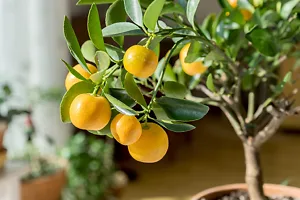
Remember too that many of the smaller citrus trees can be grown with ease in a large pot, where they will still produce their fragrant ‘orange-blossom’ blooms each spring and take all summer to plump up their fruits for the winter harvest. In pots they can be moved into the sunny spots they love and will grace your terrace or patio with their glossy foliage all year round. Our blog on Growing Citrus Trees in Containers will give you all the details if you only have room for a potted tree, or are reading all this with the envy only a northern gardener can have!
A Last Word
We have only scratched the surface of what can be grown in the Sunshine State – leaving the Grande Naine Banana Tree, the Guava Tree, Loquat Tree, Papaya Tree and other tropical rarities for another time. Whatever you are looking for, stay tuned to the Tree Center for a full program of trees and shrubs that thrive in the warmest parts of our great country.
